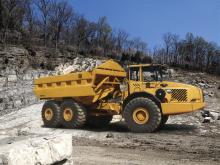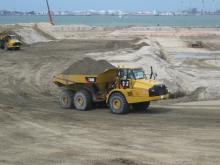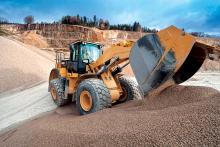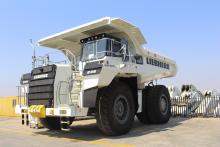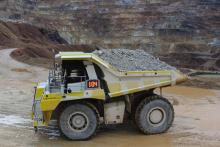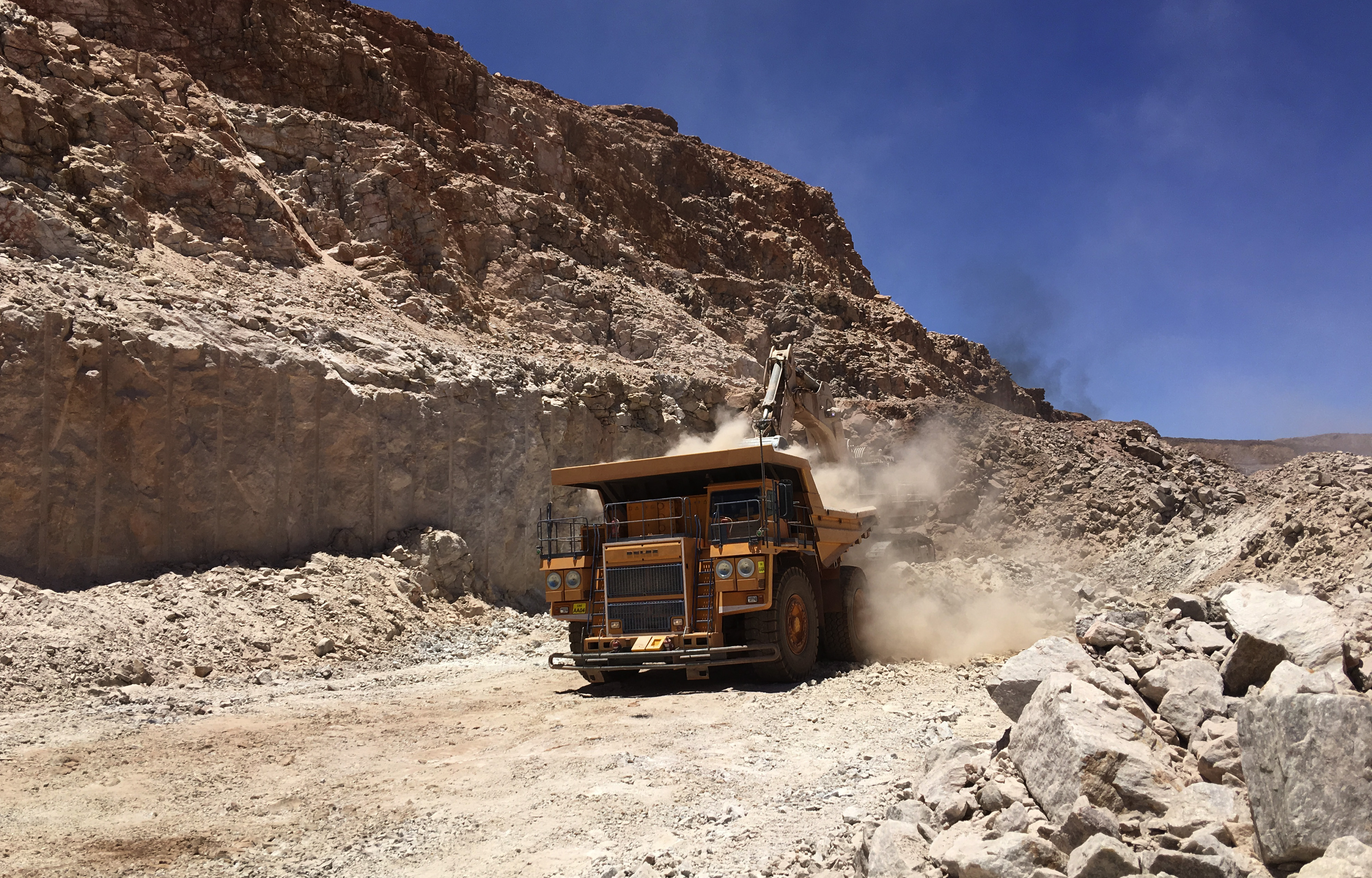
In the rigid chassis truck sector there has long been a rivalry between the mechanical and electric driveline concepts, especially at the larger end of the payload scale. Munesu Shoko looks at the latest models influencing the ongoing debate.
The mechanical versus electric drive debate has always taken centre stage as far as rigid haulers are concerned, particularly at the larger end of the payload scale. The roots of diesel-electric trucks go back many years and these were developed in answer to the flaws of early mechanical drivelines, which experienced reliability issues. Some original equipment manufacturers (OEMs) have found the diesel-electric option to offer many more benefits than the conventional mechanical option, while some have maintained that mechanical options remain the best driveline option.
“After operating trucks at mines, we concluded, at the time, that a mechanical drive offered our customers the best haulage solution and Caterpillar has since steadily advanced mechanical drive technology,” comments John Ingle, Large Mining Trucks marketing and performance manager at Caterpillar.
Today, Caterpillar is the only manufacturer that offers large (182tonne) mechanical drives. “Over the years, mechanical drive has continued to move up in size as the preferred drive solution over electric drive as OEMs have been able to offer larger capable mechanical drive systems.”
According to Ingle, Cat mechanical drive trucks have proven their value to miners and are favoured in most applications. The 136tonne 785D starts what Caterpillar terms its large mining trucks and is a mechanical drive truck. The 789D (186tonnes) and the 793D/F (227tonnes) are also mechanical drive trucks and are regarded as the workhorses of the industry, according to Ingle. Cat’s mechanical drive goes as far as the 365tonne 797F and Ingle argues that the mechanical drive option remains the most productive and lowest cost per tonne drive system choice for mining customers.
However, Ingle notes that the OEM also recognises that some customers prefer electric drive in some size classes, such as the 290tonne and 330tonne, which are predominant in AC electric drive fleets. Consequently, Caterpillar has invested in the development of AC drive trucks since the early 2000s. “We have engaged key customers with electric drive experience throughout the development process to gain their input on machine design and performance,” says Ingle.
“Caterpillar is the only large mining truck OEM that designs, produces and integrates its own engines, powertrains, drive controls and software. This is true for both Cat mechanical and AC drive trucks and allows us to optimise overall machine performance and to provide product support for the entire truck,” adds Ingle.
“While there are pros and cons to either drive system, the bottom line is that Caterpillar mining trucks, either mechanical or electric drive, are designed to bring the most value to our customers,” says Ingle, adding that the choice depends on the size of truck required and specific customer preference.
According to Lavrenov, BELAZ is a true proponent of the electric drive system for the larger end of the payload scale. All its models from 90tonnes and above are powered by electric drivelines. “More specifically, these are the trucks of 90, 110-130, 180, 200-220, 240, 360 and 450tonne payload capacity. The machines with 30, 45 and 55-60tonne payload are powered by mechanical drive,” says Lavrenov.
In terms of payload, Ingle argues that mechanically-driven trucks in the 182tonne to 220tonne size class have a 10-20tonne empty weight advantage over their electrically-driven counterparts. “The lower mechanical empty weight translates into more payload and higher efficiencies,” says Ingle. Lavrenov agrees, saying that the lower weight of the components in a mechanical drive system when compared with AC/DC drive systems, translates into lower truck weight.
When it comes to drivetrain efficiency, Ingle also argues that for haulage trucks, mechanical is the most efficient drive for getting the most power from the engine to the ground. “Electric drive truck manufacturers talk about improved powertrain efficiency of AC over DC, but the fact is mechanical drive is still more efficient than AC electric drive. This has been proven in field studies, and validated in the lab. The result is mechanical drive can do more with equal power or deliver the same performance with less power. This translates into better fuel savings,” says Ingle.
Meanwhile, mechanical drive trucks do not burn fuel when retarding downhill. Retarding forces drive need systems so fuel to the engine can be turned off. Ingle also says mechanical drive offers superior braking, retarding and traction control. “Mechanical drive trucks are recognised the world over by miners and operators as better to operate in poor underfoot conditions. Also, AC drive has a dynamic retarding capability limit that once exceeded, the truck starts to speed up. Mechanical drive brakes/retarding can bring a truck back into the desired operating envelope,” says Ingle.
Ingle also argues that mechanical drive trucks can generate and hold a higher peak rimpull (torque) than electric trucks. “This can be a bit confusing because electric trucks offer optional final drive reductions that improve peak rimpull at the cost of top end speed. In addition, electric drive systems can have a maximum electric current time limit for how long they can pull peak torque.”
In a nutshell, Ingle believes that mechanical drive offers lowest cost per tonne. “Mechanical drive delivers the best balance of production and operating costs,” argues Ingle.
According to Alexander Egorov, general design engineer at BELAZ, application of electric transmission results in a much smaller number of friction units (alternator, electric motors, reduction gear units and control cabinets), which saves up to 50% of oil compared with a conventional mechanically-driven RDT. “That simultaneously drives down operational costs by up to 38% during maintenance,” he says.
This view is shared by Lavrenov, who argues that mechanical drive requires more maintenance through oil changes, adding that service life of major components is shorter compared with electric drive.
Ingle says both drive options have engine oil, final drive oil, steering and hydraulic systems, but mechanical drive needs more fluids for the transmission and oil-cooled brakes. “But, an objective look at the actual impact on operating costs shows this only adds a very small amount of operating cost to mechanical drive trucks and is greatly offset by other mechanical drive operating cost advantages,” argues Ingle.
Lavrenov adds that electric drive has fewer major components than the mechanical drive option, and this translates into fewer potential failures. He also argues that fewer components mean less maintenance, which in turn translates into higher availability and ultimately, higher productivity.
The trolley option is another key benefit of the electric drive system, and Ingle agrees with that fact. This is a major feature of
Hitachi Construction Machinery Southern Africa introduced the new EH4000AC in southern Africa in 2014. Its trolley assist is a fuel-saving method which is not available on mechanical drive trucks. It is provided by an overhead catenary power supply supported by poles mounted along main haul roads.
While dynamic retarding force is said to be another key benefit of electric trucks, Ingle argues that this is only applied to the rear wheels. “In many cases electric trucks can quote a high retarding power or fast ‘on paper’ retarding speed. In practical field applications, electric drive retarding speeds are mostly reduced to provide protection from exceeding the electric drive retarding capability envelope and because competitive electric drive trucks do not have braking force on their front wheels like Cat mechanical drive trucks (and the Cat 795F AC) which allows a more effective braking force and good machine control – resulting in the ability to better utilise potential retarding speeds,” he says.
Lavrenov says that from BELAZ’s perspective, 130tonne payload plus trucks involved in large-scale mining and quarrying will find it easier to get over steep gradients if they are fitted with AC/DC electric driveline systems. However, he does acknowledge that both mechanical and electric drive trucks also benefit greatly from good haul roads with gentle sloping, quality maintenance and service, responsible and skilled operators and loading within the rated payload.
“At BELAZ we are of the opinion that there are more variants and configurations of operating conditions which suit electric trucks than mechanical. For instance, electric drive is an obvious choice for deep pits where trucks need to haul material from the bottom and get over steep slopes,” says Lavrenov. He adds that from a production point of view, mechanical trucks are notably slower on gradients when moving uphill loaded.
Meanwhile, Ingle argues that historically DC drive trucks were used in flatter, moderate grade or easier applications, while mechanical drive was used in poor underfoot and more severe hauls. “However, AC drive has changed many of the past electric drive limitations. Today, mechanical drive is still recognised as best for many applications, but ultimately, it is more of a function from an operation’s point of view,” says Ingle.
Ingle, in conclusion, says that when looking to the future of drive technology for large mining trucks, the industry tends to think of some sort of electric hybrid car approach. However, Caterpillar continues to research energy recovery for both mechanical and electric drive systems. Ingle further notes that, at this time, energy recovery for either drive solutions is still not cost-effective to implement.


